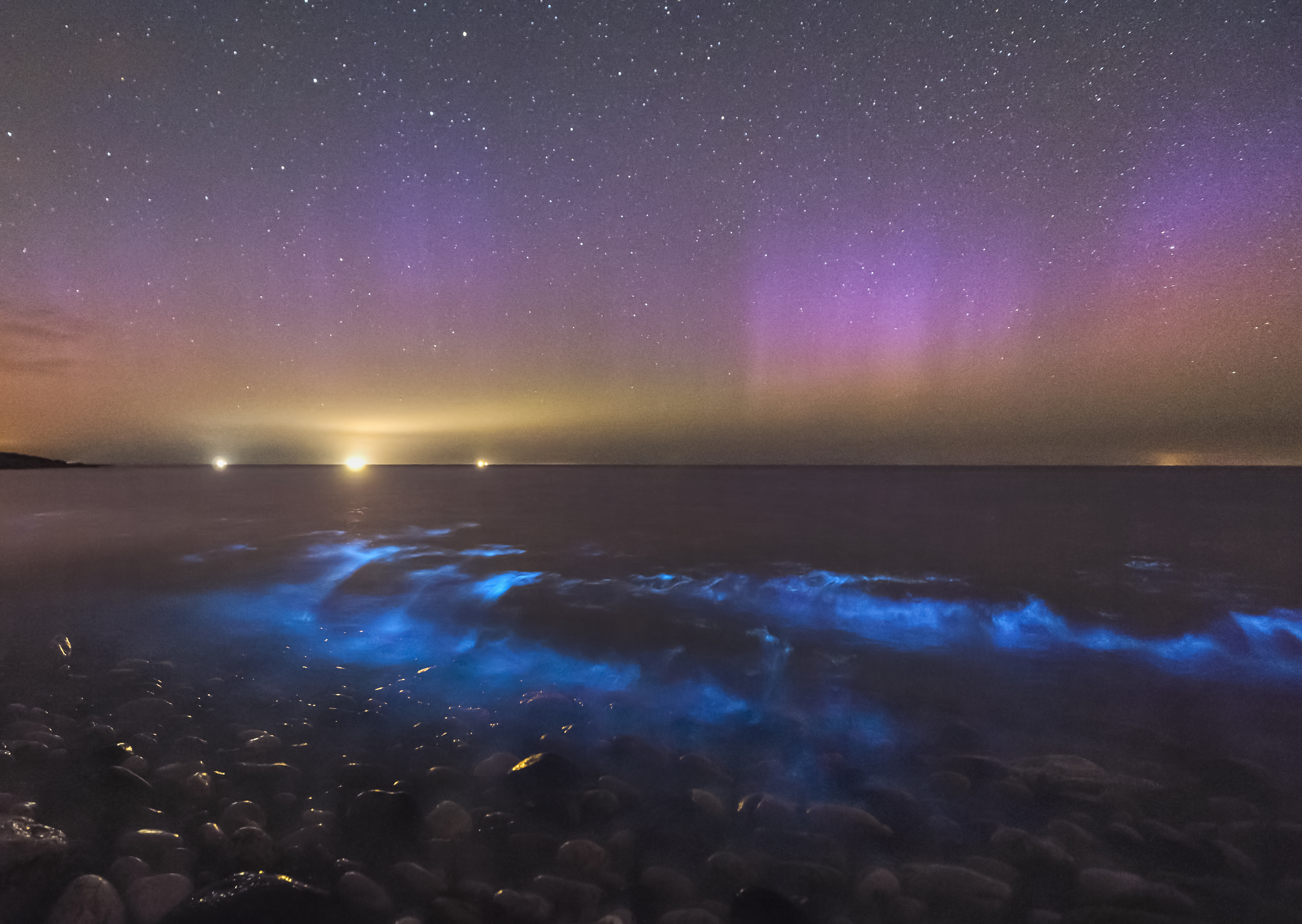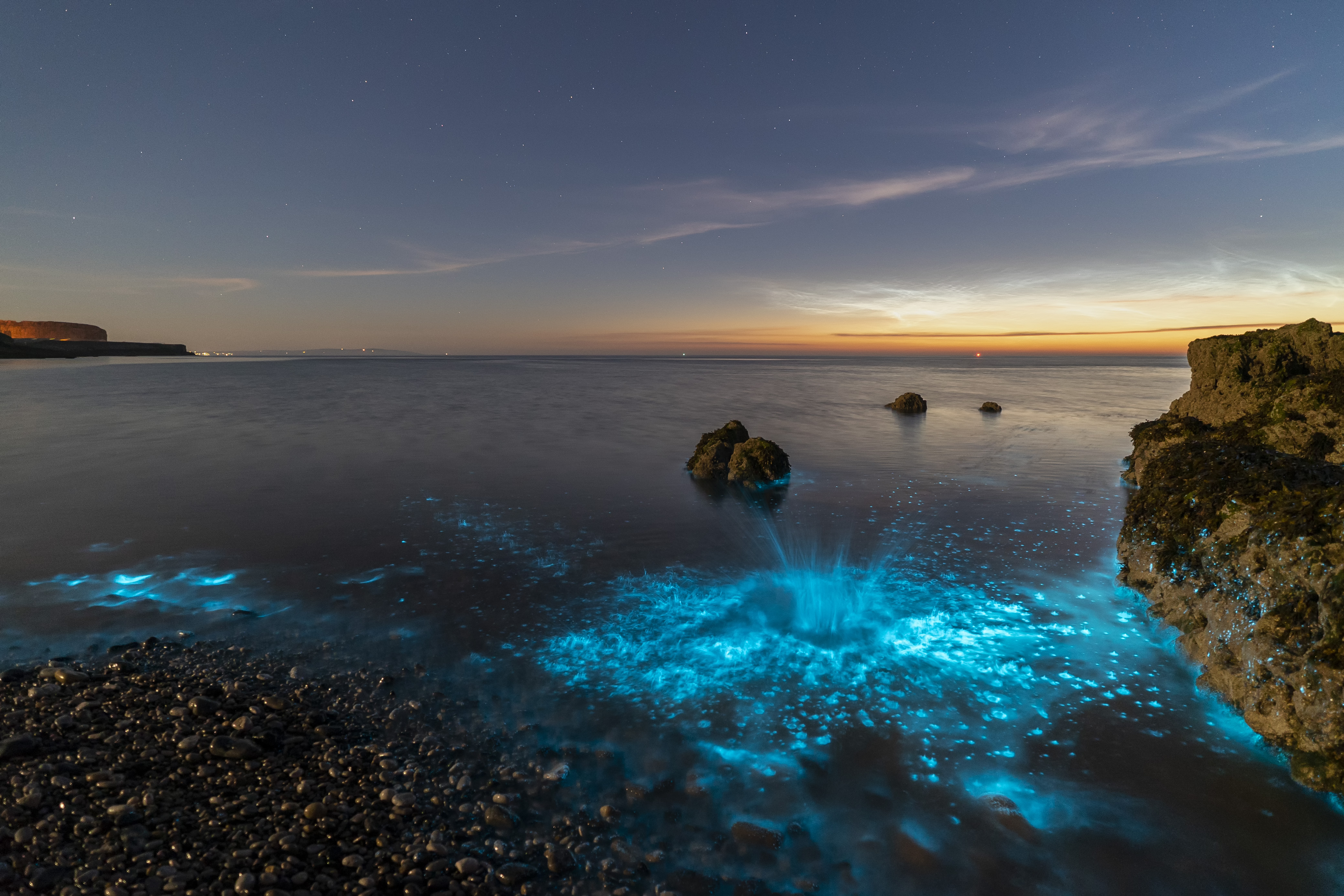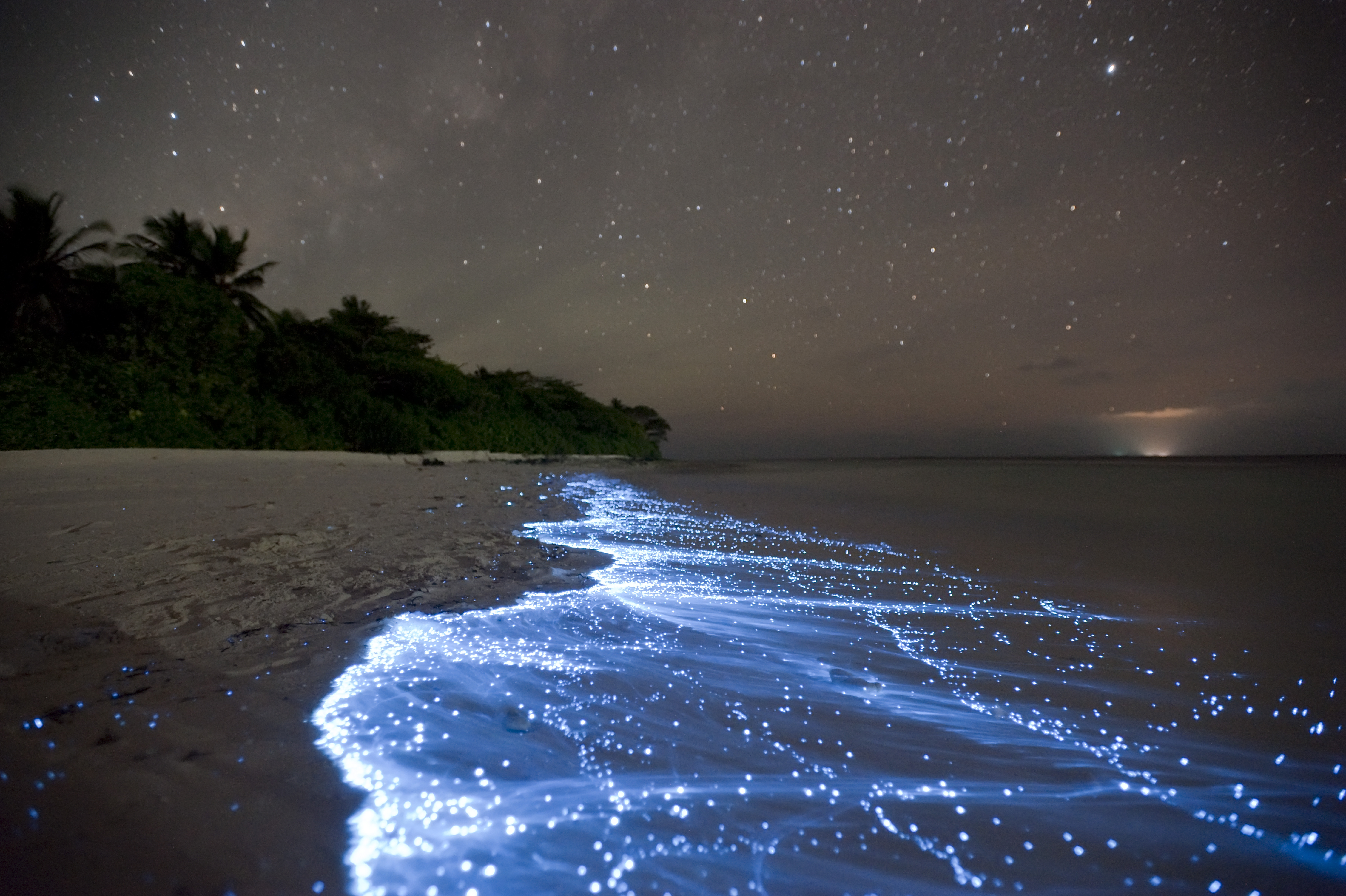How to photograph Sea Sparkle: taking images of bioluminescent plankton
Pro photographers Kris Williams and Doug Perrine share their tips for shooting pictures of bioluminescent plankton

Bioluminescence is one of the world’s most intriguing natural phenomenon. It describes the release of light from a living organism, and there’s nothing quite as spectacular as seeing it in the ocean.
Bioluminescent plankton, also known as Sea Sparkle, creates ethereal scenes along the shores of beaches at night. It’s a rare and beautiful sight which, if you’re lucky enough to see it, is well worth capturing.
Finding bioluminescent plankton
Half the work of photographing bioluminescent plankton is actually in locating it. It occurs on coastlines all over the world, but is seen more frequently in the Maldives, Thailand, Vietnam and Australia.
In order to increase your chances of seeing bioluminescent plankton, pro photographers Kris Williams and Doug Perrine (in partnership with Kuoni) have shared their advice on where to go in the world to find it, and what to look for once you’re there.
Pro Kris Williams on how to spot bioluminescent plankton:

One man who understands the wit and chance needed to locate bio-luminescence is Kris Williams, a photographer specialising in time-lapse landscape and astro photography whose work with bio-luminescence was recently featured on BBC Earth.
"As with most natural phenomenon, it is a huge challenge to put yourself in the right place at the right time," he says."Blooms of bioluminescent plankton are notoriously difficult to predict, and they occur most often far out in the ocean. It is only when tidal currents cause them to be washed towards the shore in large numbers that you will be able to see them from land."
Although its shore-line appearance is a rare occurrence, you’re more likely to spot bioluminescence with some determination, patience and these few key pointers from Kris.
The best camera deals, reviews, product advice, and unmissable photography news, direct to your inbox!

Kris' advice on where to find sea sparkle
- Do your research and find locations such as small bays, coves and harbours where bio-luminescence has been seen before.
- The warmer months tend to be more successful for bio-luminescence sightings, and I’ve seen the phenomenon occur myself in the months between April and November.
- If you heard of a display happening near you try the same spot again over the next night or so, as stronger displays can stay around for a while. Some displays I’ve seen only occur for a night, others have stayed there for several weeks.
- You need to be out looking during the night time, as plankton have a circadian rhythm and will only emit bioluminescence during that time.
- It is sometimes possible to spot the blooms during the day, by looking for clumps of red algae in the water near the shoreline – this is a good indicator that the plankton are present there and that its worth visiting that spot again the following night
- If you are out walking on a beach at night, turn off your torch, phone light and any other lights, to let your eyes acclimatise to the darkness and you’ll soon be able to find your way around.
- For bioluminescence to happen, the plankton needs to be moved or disturbed by something, so as the surf crashes onto the shoreline, the waves will ripple in blue light.
Bioluminescence in the Maldives
Marine photographer Doug Perrine shares his experience of photographing bioluminescent plankton in 2010 whilst visiting the Maldives:
“I was on a safari boat cruising the islands of Raa Atoll, in the far north of the Maldives archipelago. We stopped for an evening picnic on the uninhabited side of an island. This time our captain chose Vaadhoo Island, which has a forested interior and a sandy beach.
As it grew dark the wave wash lit up with ghostly blue light. I had no tripod, so I improvised by snuggling the camera into a beach towel placed on a plastic deck chair. To avoid camera shake when tripping the shutter, I used the lock mirror u and “delayed shutter features on my camera.
Using a wide-angle 17-35mm lens on a Nikon D700 35mm DSLR camera, I was able to obtain sufficient light with a 30 second exposure.
I varied my ISO and aperture settings between f/5.6 at ISO 6400 and f/3.5 at ISO 2500. Because of the high ISO and the long exposure, the photos were a little noisy in the fine details, but they were still of interest to National Geographic and other publishers."

"Set the shutter for a long exposure (10 seconds to a minute or more). During a long exposure the movement of the water will blur the wave wash, which is fine, but it’s critical to prevent the other parts of the image from blurring due to camera motion.
That can be accomplished by use of a tripod, a camera clamp, a selfie stick stuck in the sand, or by wedging the camera into position on any stable surface (as I did).
It’s also very useful to have a shutter release cable to prevent jarring the camera at the beginning of the exposure. This can also be accomplished by using a delayed shutter release, and, if you are using an SLR camera, by locking up the mirror before the exposure.”

Five tips for shooting bioluminescent plankton
- Use a tripod, and allow it time to settle if you’re on soft sand.
- Use manual focus, because autofocus will struggle to function in the darkness of the night.
- Play around with long exposure times. Use a high ISO setting and a wide aperture of f/2.8 (or as low as you can go) to allow as much light to come through and hit the sensor.
- Fire your exposure as the wave comes towards you, and as the camera is taking the long exposure you’ll capture the bioluminescence at its best when the wave breaks.
- Video is much less demanding of individual frame quality than still pictures are, so you can shoot at higher sensitivity, and even hand hold your camera whilst filming.
Feeling inspired? Find out more
Worldwide travel company Kuoni collaborated with Kris Williams and Doug Perrine for these tips on capturing displays of bioluminescent plankton, asking them to reveal how best to capture its unusual beauty.
Read more of their tips on finding bioluminescent plankton here.
Read more:
• How to use an ND filter for slow-shutter-speed seascapes
• Sunset photography: tips and settings for perfect pictures
• How to use an ND graduated filter for stunning landscape photography
• Landscape photography composition: fill the frame with a wide angle lens

Lauren is a writer, reviewer, and photographer with ten years of experience in the camera industry. She's the former Managing Editor of Digital Camera World, and previously served as Editor of Digital Photographer magazine, Technique editor for PhotoPlus: The Canon Magazine, and Deputy Editor of our sister publication, Digital Camera Magazine. An experienced journalist and freelance photographer, Lauren also has bylines at Tech Radar, Space.com, Canon Europe, PCGamesN, T3, Stuff, and British Airways' in-flight magazine. When she's not testing gear for DCW, she's probably in the kitchen testing yet another new curry recipe or walking in the Cotswolds with her Flat-coated Retriever.
